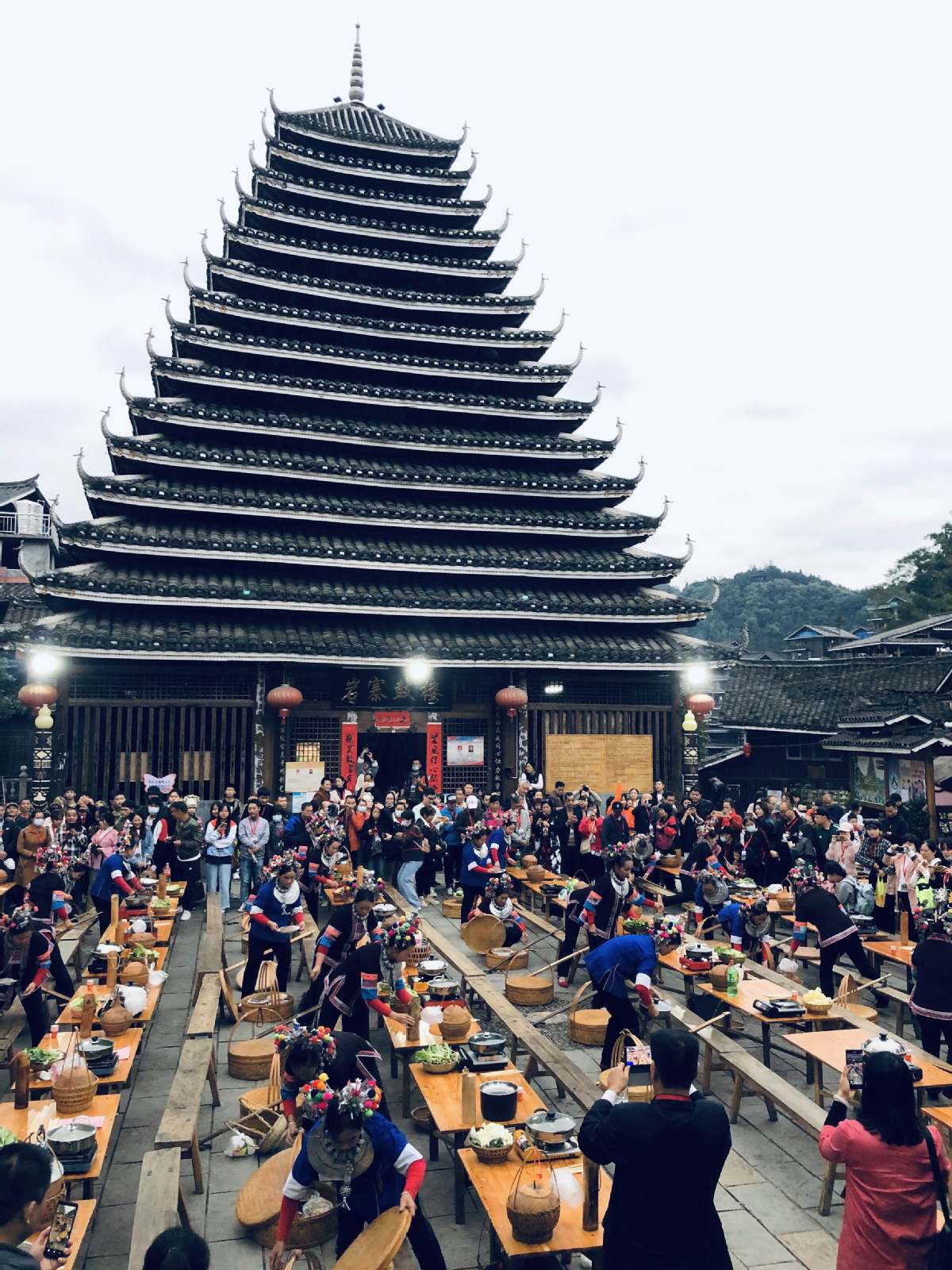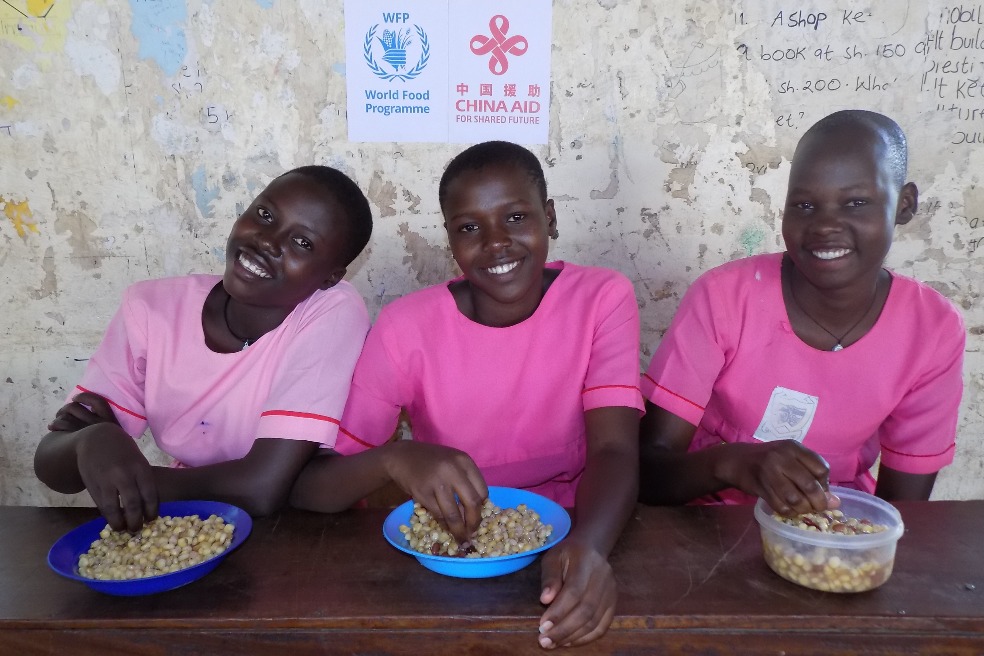Reporter's log: Guangxi county alleviates poverty through sustainable tourism, technology


It's a brisk mid-October evening in the settlement of Chengyang Bazhai, a long-established Dong village and scenic area in northern Guangxi Zhuang autonomous region, and hordes of chatty tourists are making their way along the village's narrow, winding laneways. The masses are bound for a courtyard that lies before the village's iconic bell tower and the long-table feast that awaits them there – the Bai Jia Yan, which roughly translates to 'hundred family feast' in English.
The dinner is a popular tourism activity in Chengyang Bazhai, located within Sanjiang Dong autonomous county of Liuzhou city, and attracts visitors from near and afar to sample Dong cuisine while enjoying the ethnic minority's unrivaled hospitality.
At the feast, young Dong women adorned in traditional clothing and jewelry deliver course upon course of delicious local dishes, occasionally breaking to dance, sing and pour strong spirits down the throats of thirsty guests. Diners seem to revel in the experience, posing for photos with their hosts and joining the dancing and drinking without prompting.
"Bai Jia Yan is an important part of Sanjiang's tourism economy, and the tourism industry has driven its development. It promotes employment for the masses, as well as the sale of agricultural products," says Long Xiaoqin, the deputy director of the publicity department of Sanjiang county.
After attending Bai Jia Yan, my first thought is that the dinner event is a fantastic example of sustainable tourism done right. For the uninitiated, the World Tourism Organization defines sustainable tourism as meeting the current demands of tourists and host regions while defending and advancing future opportunities. The organization notes that sustainable tourism should "respect the socio-cultural authenticity of host communities … make optimal use of environmental resources … and contribute to poverty alleviation," among other attributes.
Chengyang Bazhai's 'hundred family feast' meets these criteria in several ways.
For one, the dishes served at the feast are all prepared with locally produced vegetables and meats, supporting local agricultural workers while limiting the dinner's impact on the environment (local produce travels shorter distances and requires less fuel to transport, limiting greenhouse gas emissions).


































